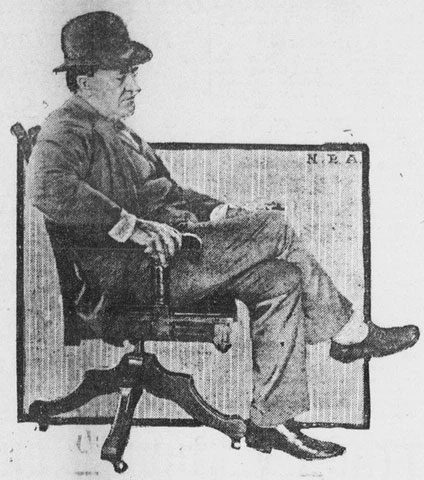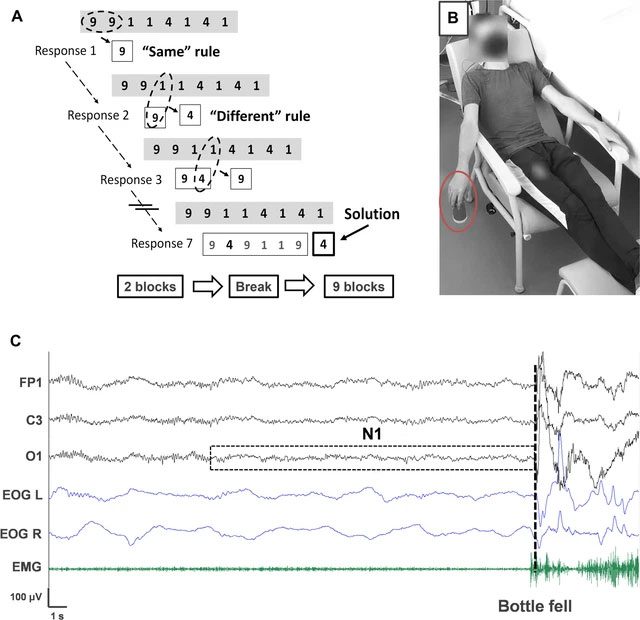Thomas Edison was a brilliant inventor, but that doesn’t mean he never faced creative blocks. Have you ever wondered what Edison would do in such moments? Would he sneak a peek at Nikola Tesla’s notes?
The truth is, when Edison couldn’t figure out what to do next, he would hold a steel ball in his hand and then take a nap. Edison would lie on a couch, letting his hand dangle.
The idea was that just as he drifted off to sleep, his relaxed hand would cause the steel ball to drop, waking him up. Edison noted that this very liminal state between sleep and wakefulness was when he achieved his highest creative insights. This might have been the secret that allowed Edison to bring inventions from dreams into reality.

Thomas Edison sleeping on a couch in his laboratory in 1911.
Over 100 years after Edison’s power naps, a group of scientists from the Paris Brain Institute have now attempted to replicate his technique. The results showed that those who followed Edison’s sleep formula tripled their chances of solving a difficult problem.
Clearly, this waking trick has some impact on the brain. Once again, we find that Edison was right, but in a field that was not his expertise.
Hypnagogia: The Well of Creativity
You may not know that sleep and wakefulness are not two sides of the same coin. To transition from wakefulness to sleep, scientists say we must pass through a transitional phase known as hypnagogia.
In simple terms, hypnagogia is the semi-conscious stage that lasts a few minutes before you fall into deep sleep. Unlike another fascinating phenomenon known as lucid dreaming (Lucid dream), which we rarely experience, hypnagogia occurs naturally before every sleep.
During this transition, you may experience very brief dreams. The content of these dreams is often random, and most of the time, you won’t remember anything about them when you wake up. Hypnagogia is thus likened to a wild frontier, as this stage of sleep has barely been explored and harnessed by science.
Researchers believe that hypnagogia is one of the most intriguing phases of neural experience. It is described as a wellspring of creativity, filled with wondrous illusions and ideas that never appear in reality but manifest in hypnagogia. The question now is how to prove and harness this phenomenon?

Another photo of Thomas Edison sleeping on a couch in 1904.
In a recent study published in Science Advances, Delphine Oudiette and her colleagues at the Paris Brain Institute recreated Edison’s sleep method with 103 volunteers.
First, they were asked to solve a problem of arranging 8 digits into a sequence according to a given formula. The catch was that there was a much quicker solution hidden within the challenge, intended to prompt the volunteers to figure it out.
In fact, 16 people discovered the new solution after just a few attempts at the problem. Consequently, they were removed from the experiment because Oudiette wanted to test only those who were struggling for inspiration.
The remaining participants, after having struggled with the problem for an extended period without finding a solution, were asked to take a 20-minute break. They lay back on chairs and held a plastic cup instead of Edison’s steel ball.
Oudiette connected their heads to a wave-tracking machine to monitor when they were awake, in deep sleep, or in a hypnagogic state. Volunteers were instructed to wake up just as they heard the cup drop and report what they had dreamt.
The results showed that most participants experienced strange images: from dancing numbers and geometric shapes to Roman amphitheaters and a hospital room with a horse.
However, the brainwave signals indicated that only 24 participants woke up correctly during the hypnagogic phase. Others dropped their cups while their brains remained alert or fell into deeper sleep.

The experimental design of the French scientists.
Edison was right; hypnagogia is a switch for creativity
When the volunteers were asked to return to their original problem, impressive results emerged. While researchers found no correlation between the dream content and problem-solving performance, they discovered that those who woke up during hypnagogia were three times more likely to find the hidden formula compared to those who remained awake. Of the 24 who woke up, 20 (83%) found the answer, compared to just 15 out of 59 (30%) in the awake group.
The creative effect occurred even for those who only spent 15 seconds in the initial sleeping phase. However, this technique was ineffective for individuals who had entered the later stages of sleep.
Oudiette stated: “Our findings suggest there is a sweet creative spot at the onset of sleep. It is a small window that can disappear if you wake up too early or fall into too deep a sleep.”
Yet, in contrast to Edison’s story, the eureka moment did not come immediately upon waking for the volunteers in this study. On average, they had to attempt the problem 94 times after sleeping to gain the most insight. Oudiette remarked: “It seems you can’t just take a nap and wake up with a solution right away“. Instead, patience is needed.
However, sleep researcher Tore Nielsen at the University of Montreal was surprised to see such a significant effect from short naps. Nielsen noted that scientists previously believed longer sleep durations would be more beneficial for problem-solving.
He himself has applied Edison’s trick in his personal life. Nielsen stated that now that this technique has been validated, it will make research into sleep and creativity easier.

A statue of Thomas Edison holding a steel ball.
To answer the question of where creativity comes from, Oudiette’s team examined the brainwave patterns of the volunteers who woke up from the hypnagogic state. She found that all had moderate levels of alpha waves, a slow brain wave associated with relaxation, and lower levels of delta waves, a sign of deep sleep.
Oudiette mentioned that researchers can now focus on this brain signal when investigating the neural mechanisms of creative activity. Her team plans to conduct an experiment to help people reach this creative window by tracking their brain waves in real time.
Ideally, we could extend the duration of hypnagogic sleep or stimulate its brainwave patterns to emerge while we are still awake. This way, we could create a personal creativity switch. Oudiette stated that her new research has somewhat validated Edison’s intuition, and now our task is to explore the rest of hypnagogia.


















































